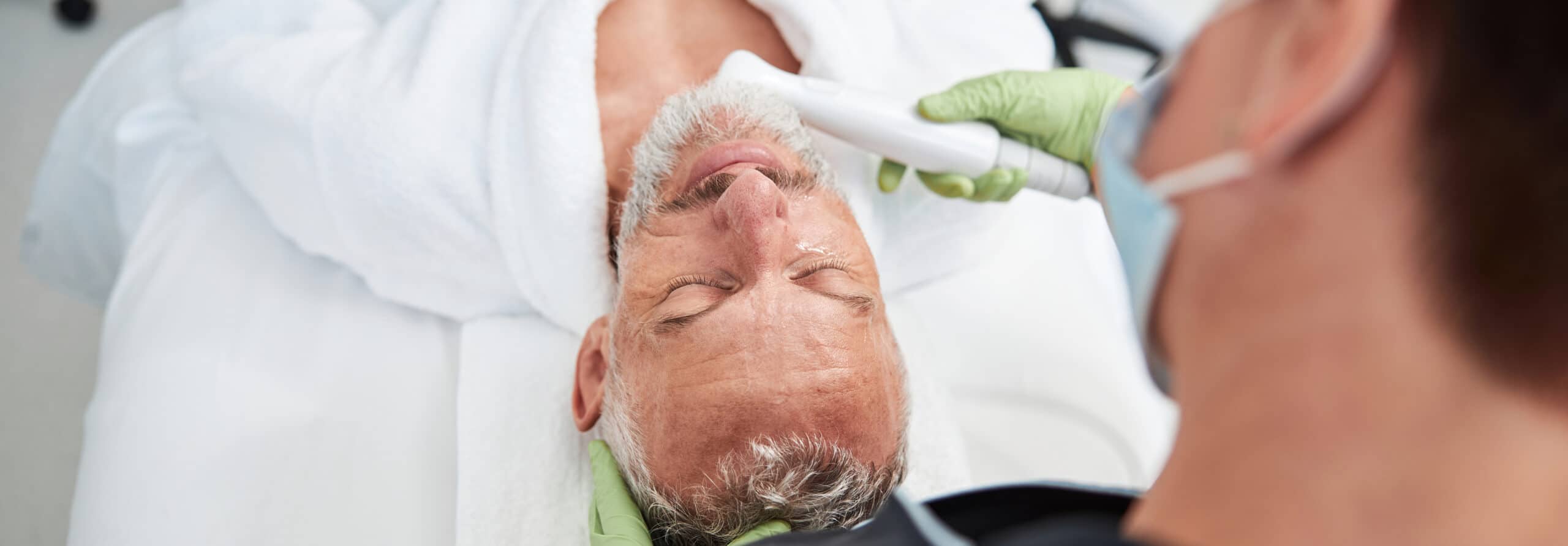What Is a Photofacial?
A photofacial is a light-based treatment used to improve the appearance of photo-aged skin, sun-induced brown pigmentation, redness of rosacea and blood vessels. It will reveal brighter, younger, and healthier-looking skin by improving the overall tone and texture. The most commonly treated areas include the face, neck, chest, and hands.
How Do Photofacials Work?
Photofacials use IPL light treatment to affect and improve the appearance and condition of skin. A photofacial is different from a laser treatment which uses only one wavelength of light. IPL uses multiple wavelengths and is transmitted through a small smooth transparent headpiece placed onto the skin. Various cutoff filters are used to change the type of color therapy applied to the skin. Different colors can create different results addressing a wide range of skin concerns and conditions. IPL is safe and easy and is done as an outpatient procedure.
Conditions Treated by Photofacials
Photofacials can be used for a wide range of cosmetic procedures addressing a variety of concerns. Common conditions treated with IPL include wrinkles, sunspots and unwanted body hair. IPL can also be used to lighten the appearance of freckles, birthmarks, and varicose veins. Finally, IPL is also used to improve the appearance of wrinkles and reduce sagging in the skin.
What Does the Procedure Feel Like?
The treatment consists of multiple pulses delivered with the light source. Each pulse feels like a brief hot stinging or snapping sensation that is mildly uncomfortable. A device that blows cold air is used during the treatment to keep the skin cool and decrease discomfort. Some patients choose to take ibuprofen prior to treatment to help with discomfort. Use of topical anesthetic prior to treatment may decrease effectiveness, as it constricts blood vessels making it harder for the laser to “see” them.
Do I Need to Do Anything to Prepare in Advance?
Tanned skin cannot be safely treated, so you should avoid sun exposure for four weeks prior to your treatment and self-tanning products should not be applied to the treatment area two weeks prior. If you have a history of cold sores, be sure to notify your provider prior to your appointment and he or she will prescribe a medication to take the night before that will reduce the likelihood of a breakout. If you are using any products containing a retinoid on the treatment area, stop using them five to seven days prior to your treatment.
What Will I Look Like Afterwards?
It is expected to have mild swelling and redness immediately after the treatment that usually resolves after two to three days. Pigmented lesions darken before resolving and develop a “peppering” appearance before sloughing away in about one to two weeks. There is minimal social downtime, which means most people feel comfortable returning to work and normal activities immediately after the treatment, but often avoid major social events.
Can You Wear Makeup After a Photofacial?
Makeup may be applied immediately. However, you should avoid the use of retinoids on the treatment area for five to seven days after treatment. It is also recommended that gentle skincare products be used for the first five to seven days following the treatment. A sunscreen with at least SPF 30 and zinc oxide as an active ingredient should be used daily.
How Many Treatments Are Needed?
We recommend a series of three to five treatments scheduled four to six weeks apart. Maintenance treatments are then recommended as needed, typically once a year.
How Long After the Photofacial Will I See Results?
Each treatment will yield a percentage of improvement with overall results culminating in the month following the series of treatments. Most patients report the largest percentage improvement after the first treatment, as there is the largest target present for the laser. Subsequent treatments contribute additional results to the overall improvement.
Who Cannot Have the Treatment?
Photofacials are not safe in darker skin types or tan skin. Patients who have taken isotretinoin (Accutane) within the previous 12 months or are currently pregnant cannot have the treatment. Patients who have a history of radiation treatments, collagen/vascular diseases or autoimmune disease may not respond as well. In addition, smoking, excessive alcohol use and excessive sun exposure limit results.


